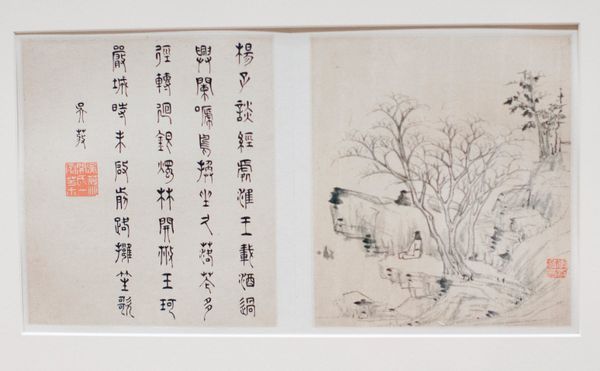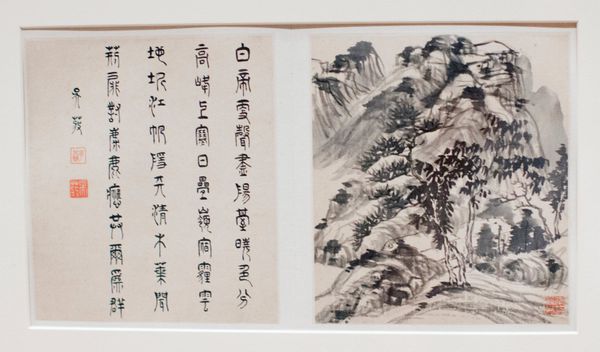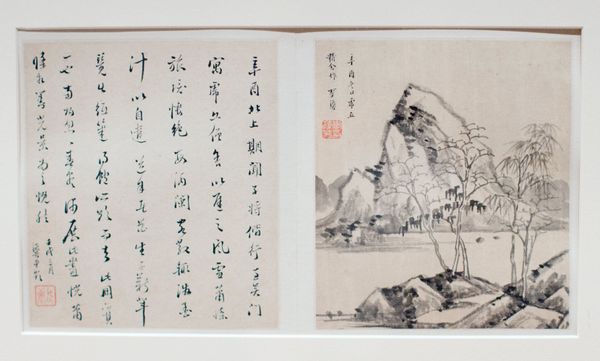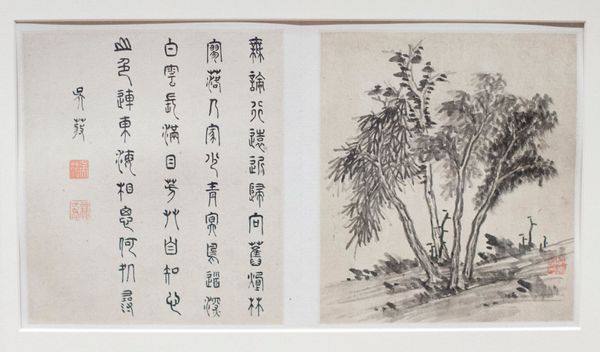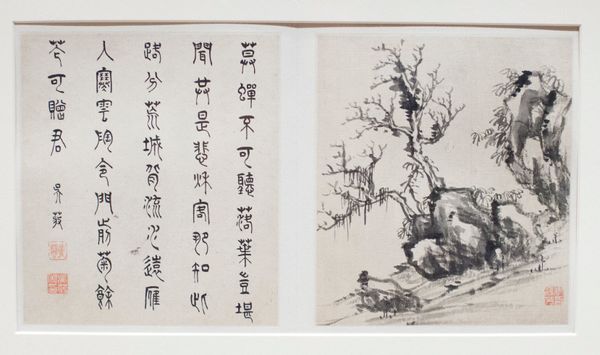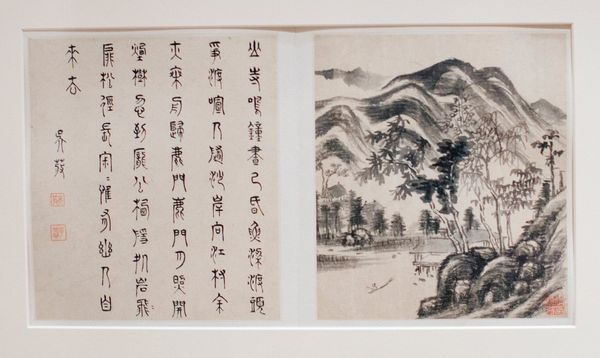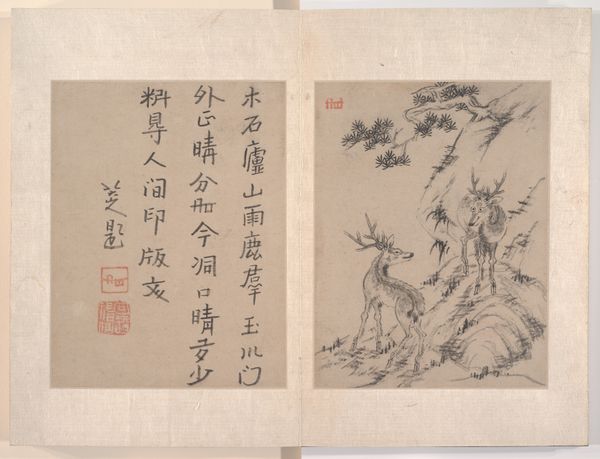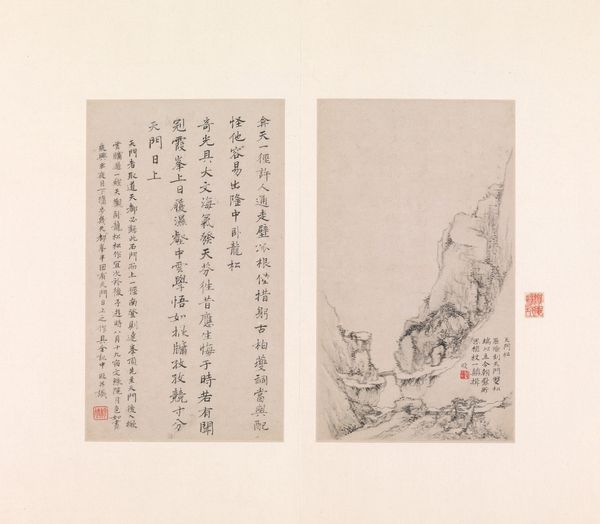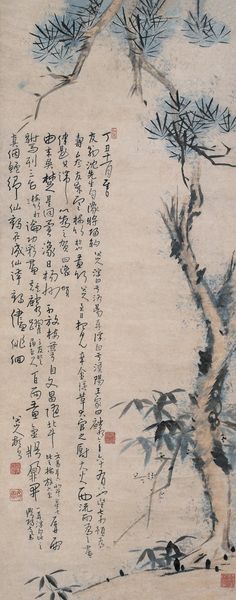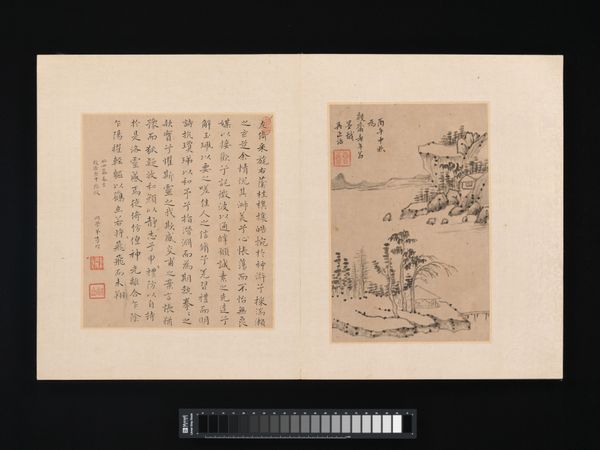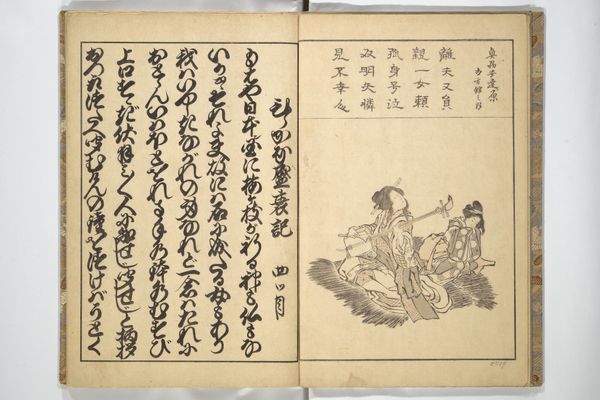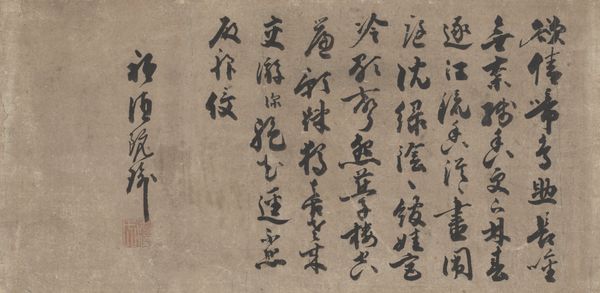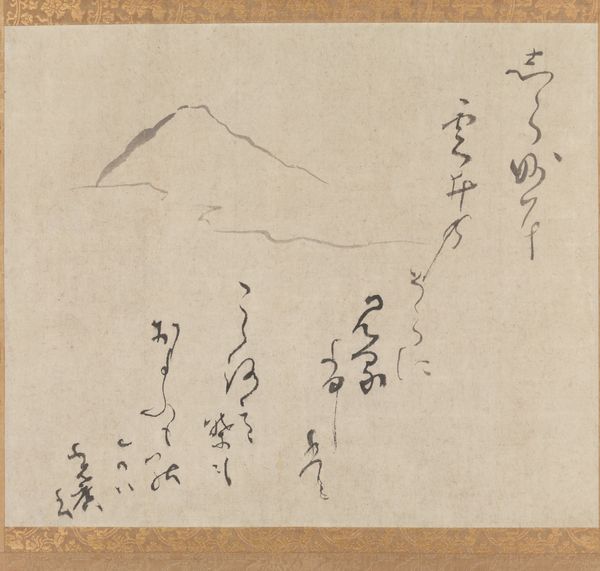
drawing, paper, ink-on-paper, ink
#
drawing
#
asian-art
#
landscape
#
figuration
#
paper
#
ink-on-paper
#
ink
#
abstraction
#
china
#
line
#
calligraphy
Dimensions: 7 1/8 x 6 1/4 in. (18.1 x 15.88 cm) (image, each)10 7/8 x 16 3/4 in. (27.62 x 42.55 cm) (mount, overall)14 x 18 in. (35.56 x 45.72 cm) (mount)
Copyright: Public Domain
Editor: Here we have two album leaves from a landscape album, created in 1621 by Li Liufang. They are ink on paper. I'm immediately drawn to the contrast between the very structured calligraphy on the left and the almost dreamlike landscape on the right. What cultural elements inform this kind of pairing? Curator: That's a keen observation. Consider the literati culture of the time. Landscape painting was often a vehicle for expressing personal feelings and philosophical ideas. Calligraphy wasn’t just writing, it was an art form inseparable from painting. Does the presence of calligraphy alter your experience with the image? Editor: Definitely. Knowing they are intertwined elevates both elements. I now see them more as a unified expression. Can you elaborate on how socio-political forces influenced literati art at that time? Curator: Certainly. The late Ming Dynasty, when this album was created, was a period of political instability. Many literati artists, like Li Liufang, turned to art and poetry as a way to express their detachment from court politics. These landscape scenes could be seen as idealized retreats from the chaos of the world. Did Li Liufang’s decision to distance himself from politics impact the wider artistic scene? Editor: That makes a lot of sense, and it’s fascinating to think about this serene imagery as a reaction against turmoil. It encourages me to delve more deeply into understanding historical and societal implications influencing artwork creation. Curator: Absolutely. Context transforms our understanding. Seeing the work as both an aesthetic object and a product of its time enriches the experience.
Comments
minneapolisinstituteofart almost 2 years ago
⋮
Li Liufang was a painter of the late Ming dynasty. He painted mostly in small formats, playing with ink and trying to channel the creative essence of certain old painting masters rather than copying their formal patterns. Most of his works look like improvised sketches, executed with fresh spontaneity. This album contains examples of Li’s early style—spare, linear compositions, in which he used less ink for thinner, fainter lines—as well as his later style, with its rich, inky brushwork.
Join the conversation
Join millions of artists and users on Artera today and experience the ultimate creative platform.
